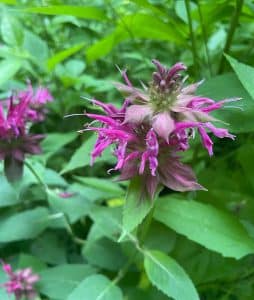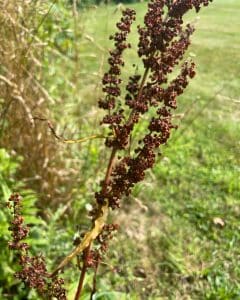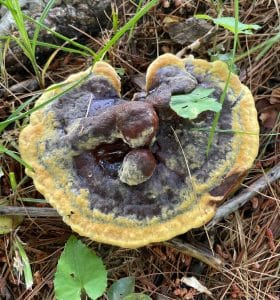Page Created by Connecticut Foraging Club
Upcoming Events | Meet the Instructors | Plant Archive | Mushroom Archive
----------------
Upcoming Events | Meet the Instructors | Plant Archive | Mushroom Archive
----------------
Wild Parsnip (Pastinaca sativa) is the same species as cultivated garden parsnip. It is a non-native plant that was brought here from Europe as a crop.
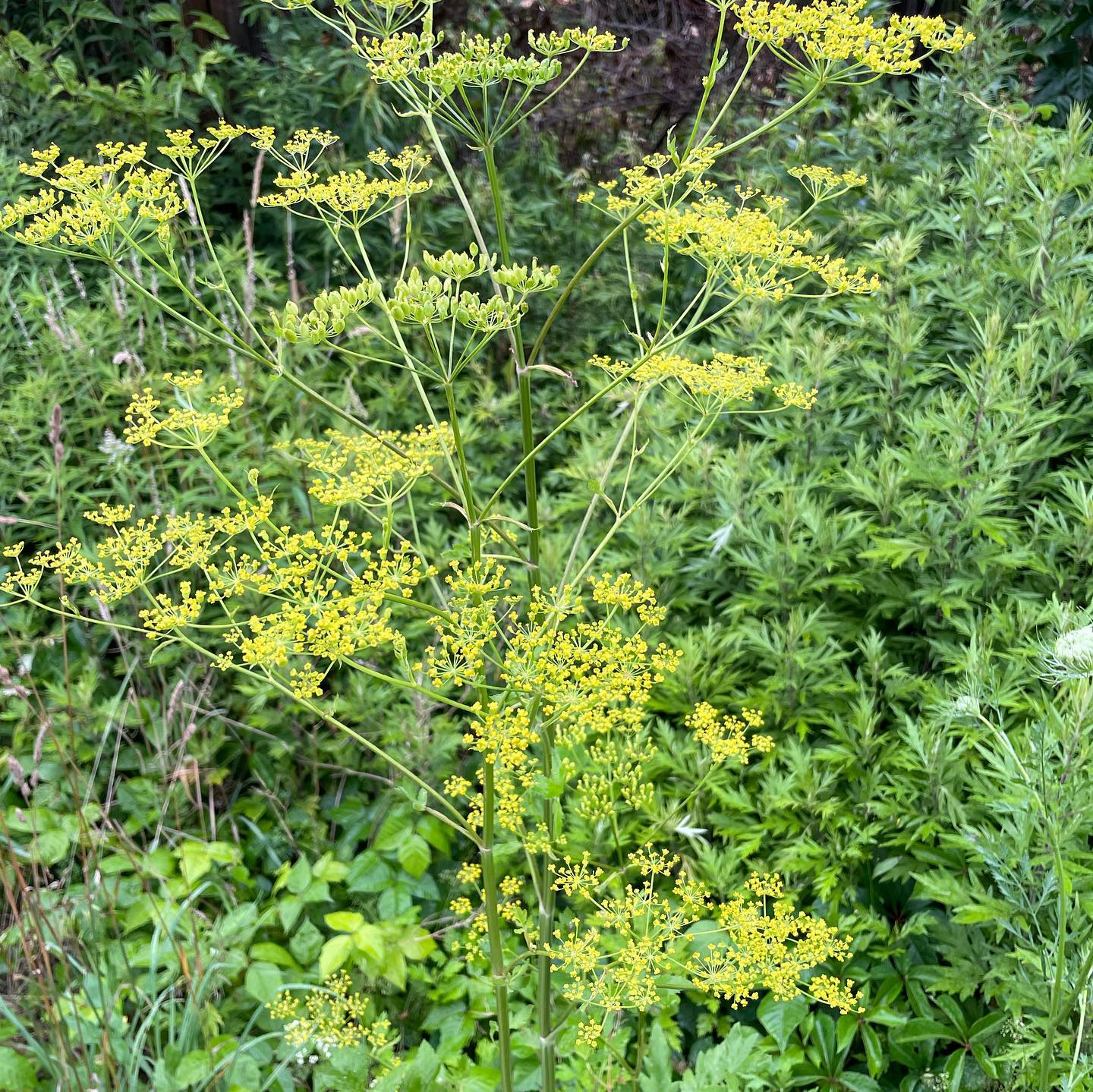
Wild parsnip can be found in backyards, field edges, and disturbed areas that receive plenty of sun.
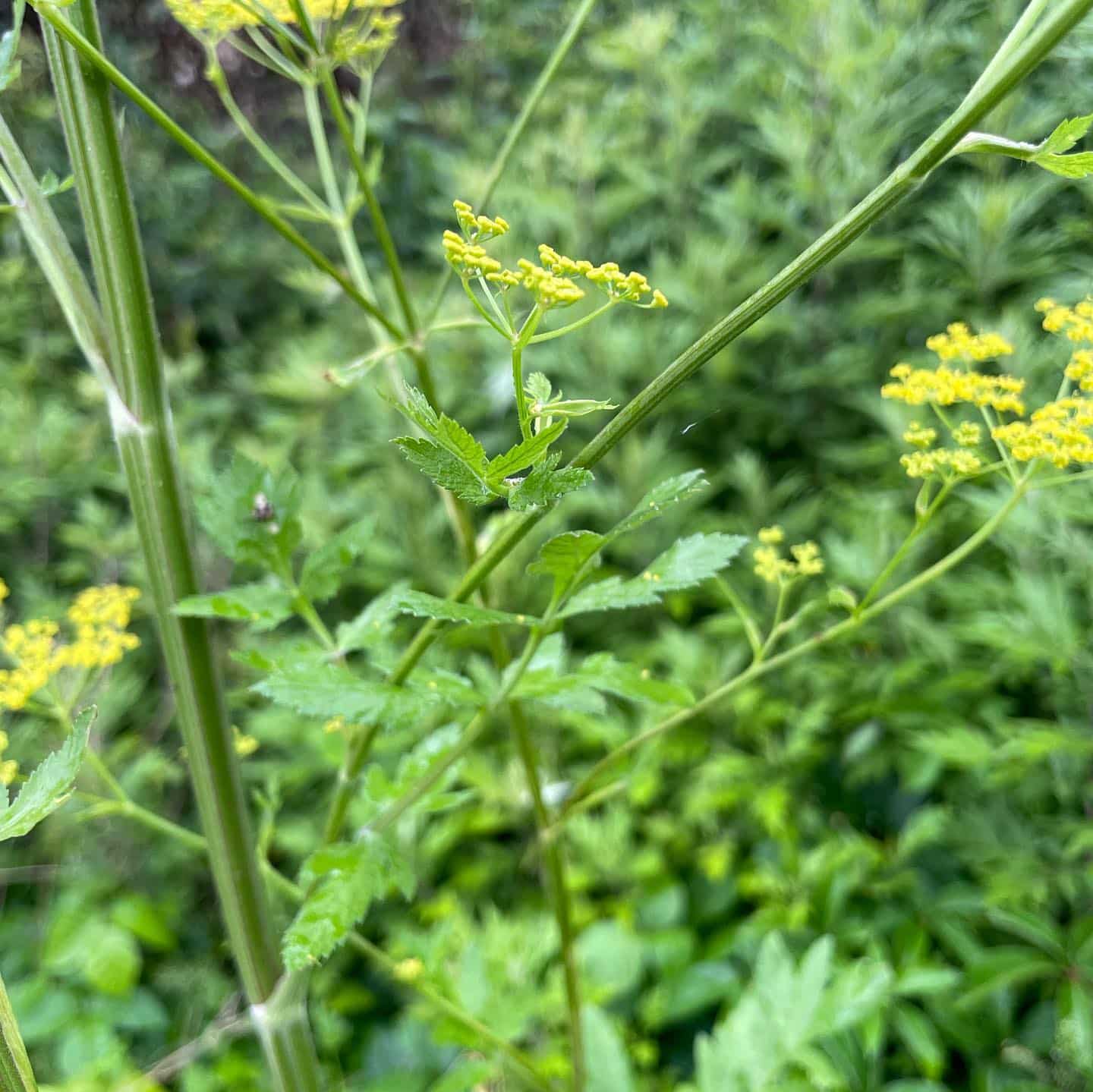
Wild parsnip can be identified by its celery-like leaves, deeply grooved main stalk, and umbel of yellow flowers.

Being in the carrot family (Apiaceae), it must be differentiated from Water hemlock and Poison hemlock, both of which have white flowers and fern-like leaves.
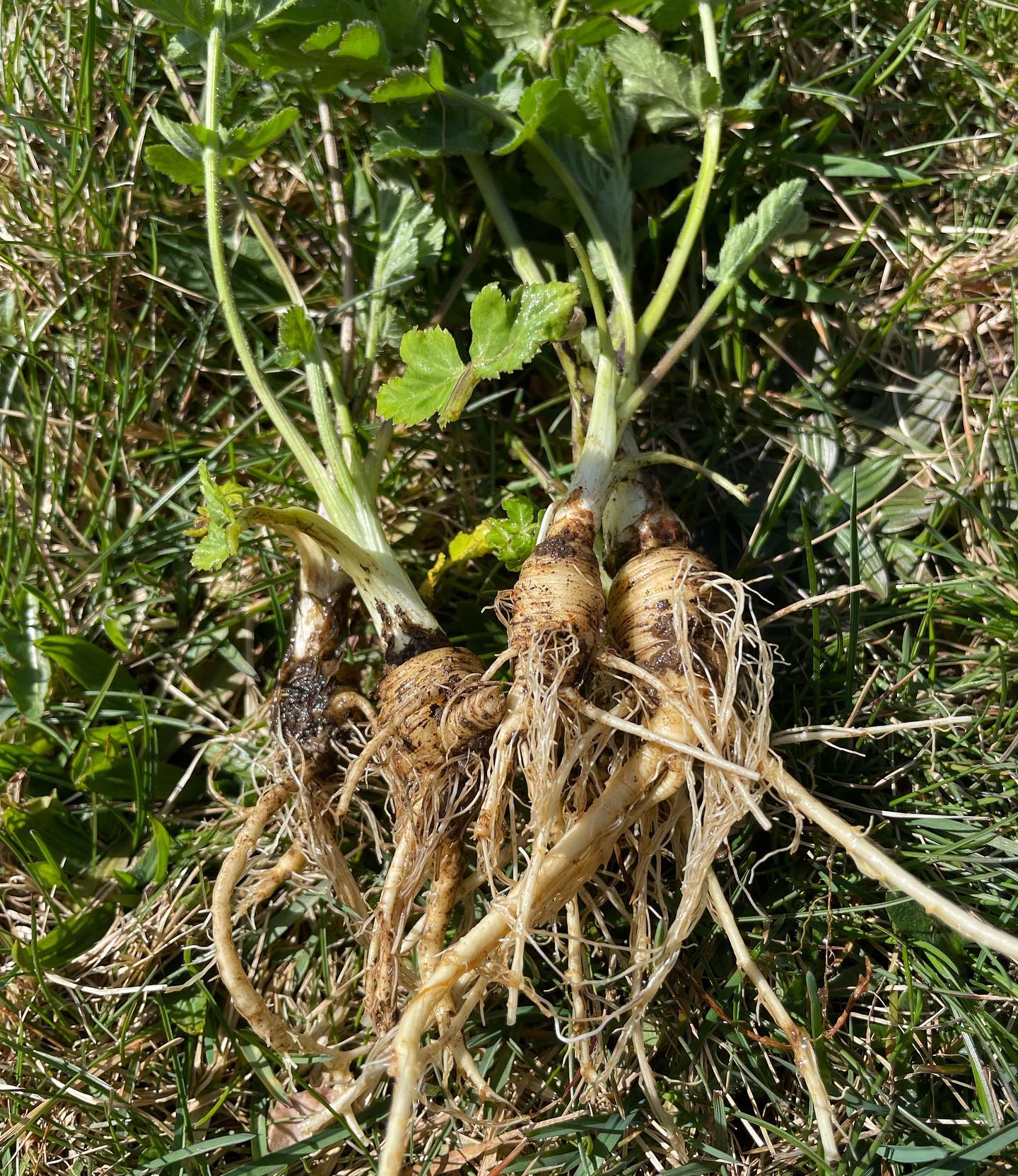
Parsnip leaves and stems contain furanocoumarins, a toxin that can cause skin rashes and burns if your skin is exposed to the sun after being in contact with the juices from the plant. Therefore, it is best to wear gloves when harvesting the plant.
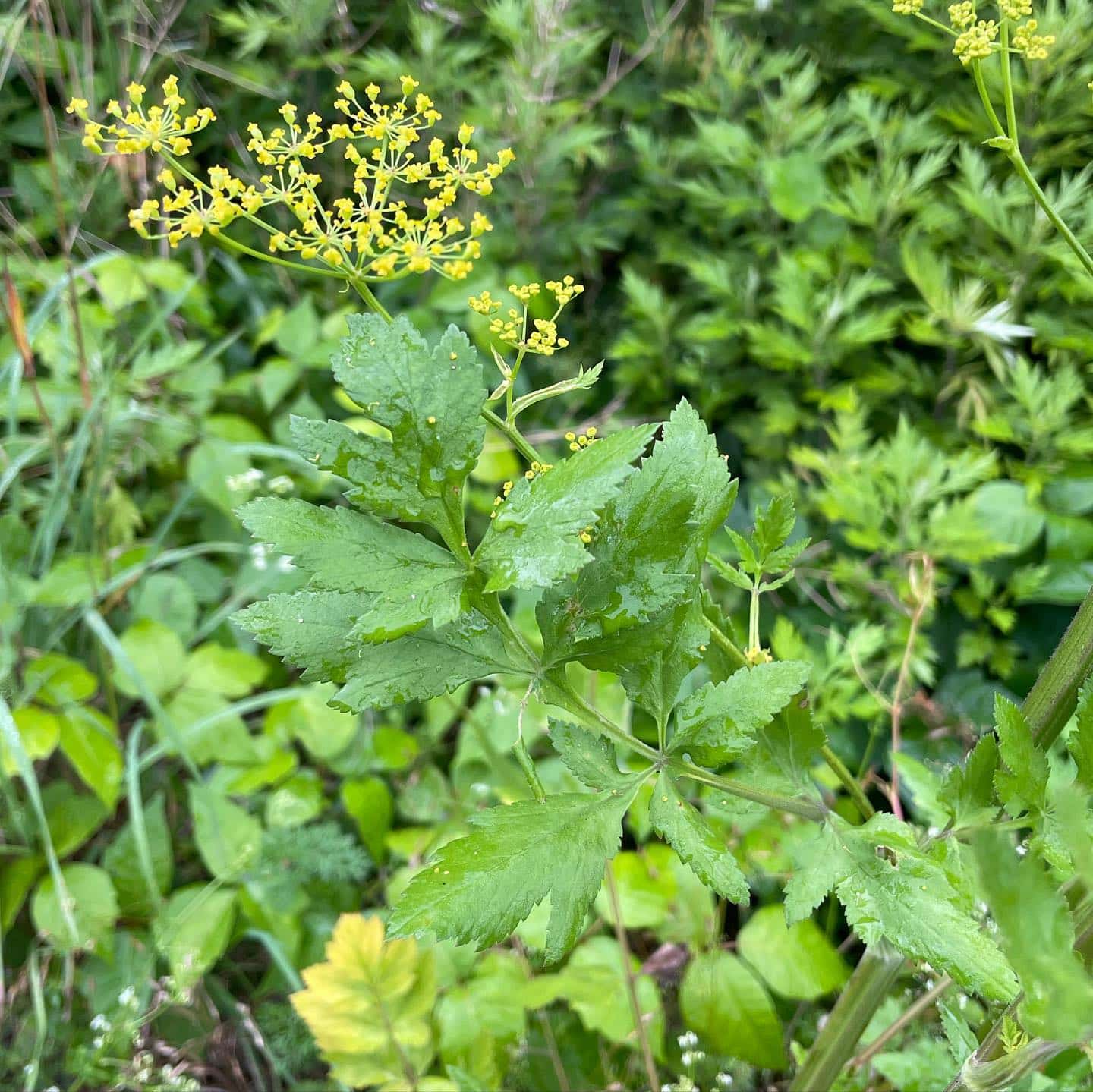
Wild parsnip roots can be used in the same manner as garden parsnip. The roots should be harvested in early spring, when the leaves are forming a basal rosette. After flowering, the root will be woody as the plant draws nutrients and sugars from its root to produce the flowers. Parsnip roots can be eaten raw, but they are better boiled, roasted, or fried.
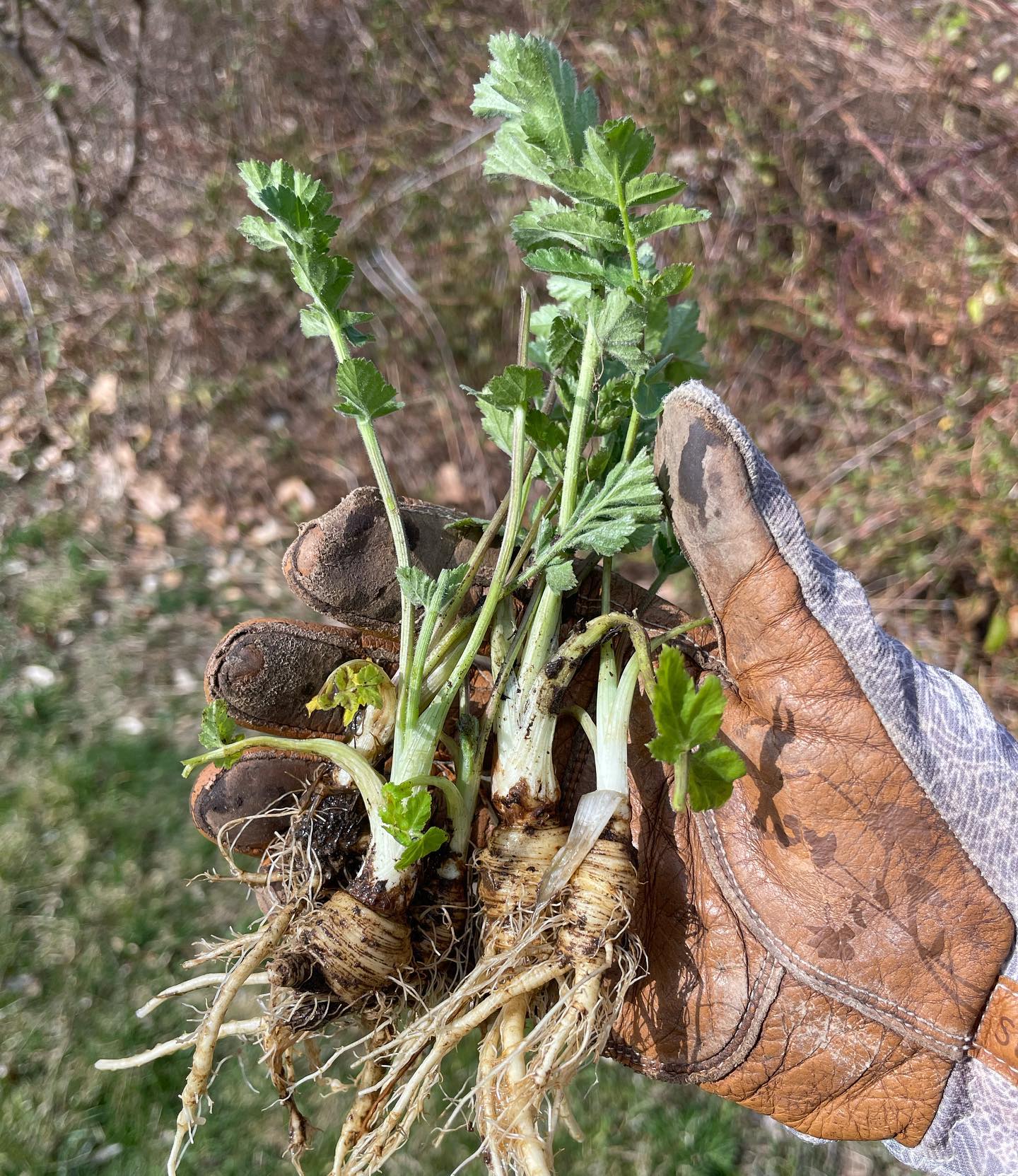
Wild parsnip also produces edible greens. Greens can be eaten raw or cooked like carrot greens. Just be sure to wear gloves when harvesting the greens.

Parsnip seeds can be used as a spice. In Persian cuisine, similar seeds are turned into a spice called golpar, which is used to flavor legumes.
--
Written by Amy Demers, founder of the Connecticut Foraging Club. To learn more about foraging in Connecticut, check out our upcoming classes.

